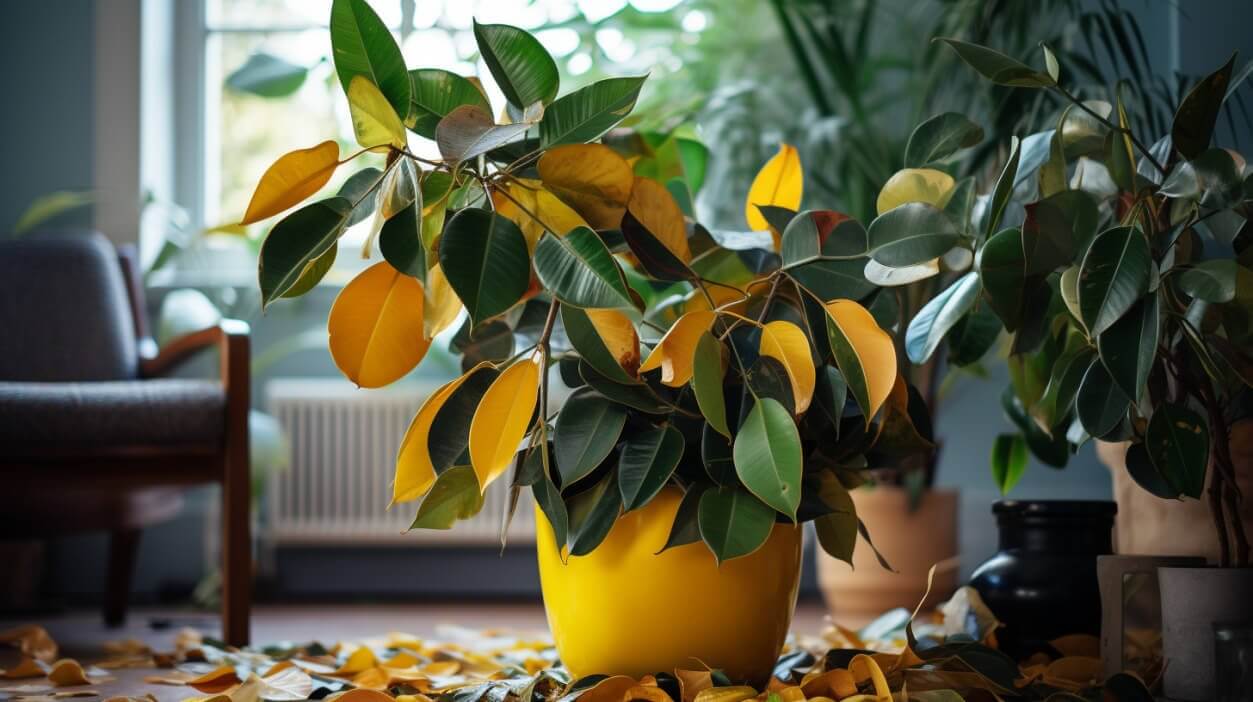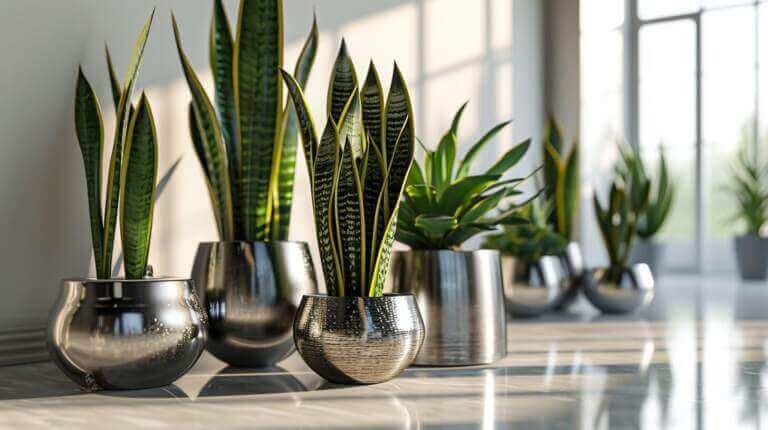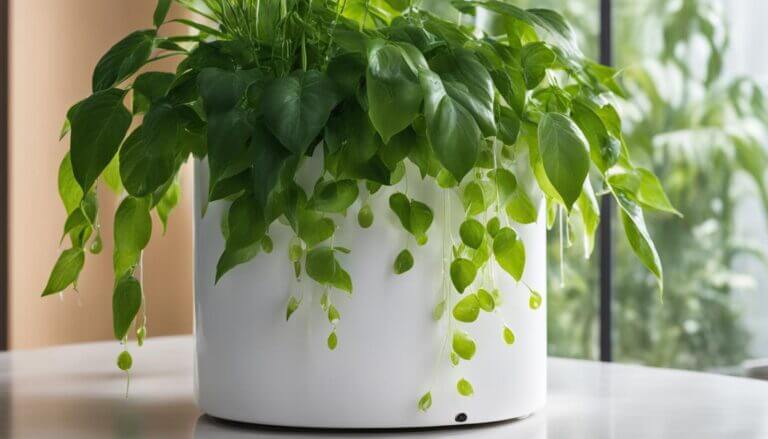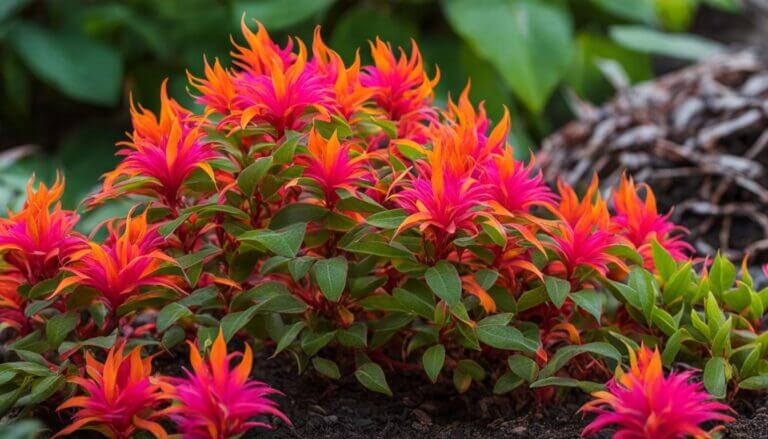Why Do Rubber Plant Leaves Droop and How to Revive Them
Key Takeaway:
- Overwatering is a common cause of drooping rubber plant leaves. Allow the soil to dry out between waterings and ensure the pot has drainage holes.
- Underwatering can also cause leaves to droop. Water thoroughly when the top inch of soil is dry. Rubber plants like even, consistent moisture.
- Repotting into a larger container with fresh soil can revive a drooping rubber plant. This gives the roots more room to grow.
- Rubber plants prefer bright, indirect light. Direct sun can scorch the leaves. Place the plant in a spot with some sun but not direct light.
- Maintain warm temperatures and high humidity around rubber plants. Mist the leaves regularly and keep away from cold drafts.
- Fertilize monthly in the growing season with a balanced houseplant fertilizer to encourage new growth.
- Prune off any dead or yellow leaves. This redirects energy to new healthy growth.
- Check for pests like spider mites that can cause the leaves to droop and turn yellow. Treat any infestations.
- Slowly move the plant to a better location if the drooping doesn’t improve. Environmental factors like light and temperature could be the cause.
Common Signs of Rubber Plant Leaves Drooping
As a plant lover, it can be disheartening to see your once thriving rubber plant drooping. However, recognizing the signs of a drooping rubber plant is the first step in reviving it. Some common signs to look out for include:
- Wilting leaves: If your rubber plant’s leaves start to wilt and appear limp, it is a clear sign of drooping.
- Yellowing leaves: Another sign of a drooping rubber plant is when the leaves turn yellow or brown and drop prematurely.
- Loss of vigor: A healthy rubber plant should have a strong and upright posture. If you notice your plant becoming weak and droopy, it is a clear indication of a problem.
Identifying the Root Cause of Drooping Rubber Plant Leaves
To effectively revive your drooping rubber plant, you need to address the underlying cause. Here are some possible reasons why your plant may be drooping:
- Overwatering: Rubber plants are prone to root rot if overwatered. Check the soil moisture level regularly and ensure it is allowed to dry out between waterings.
- Underwatering: On the other hand, if you neglect to water your rubber plant adequately, it can lead to dehydration and drooping. Ensure you provide enough water to keep the soil evenly moist.
- Lack of sunlight: Rubber plants require bright, indirect light to thrive. If your plant is not receiving enough light, it may become weak and droopy. Move it to a spot with more sunlight.
- Temperature extremes: Rubber plants prefer temperatures between 60°F and 75°F. Exposure to extreme cold or hot temperatures can cause drooping. Keep your plant away from drafts and heaters.
- Nutrient deficiency: If your rubber plant lacks essential nutrients, it can weaken and droop. Consider using a balanced fertilizer to provide the necessary nutrients.
Reviving a drooping rubber plant may take time and patience, but with the right care, your plant can bounce back. Here are some general tips for reviving a drooping rubber plant:
- Adjust watering: Ensure you water your plant correctly, allowing the soil to dry out slightly between waterings. Avoid both overwatering and underwatering.
- Provide adequate light: Place your rubber plant in a bright spot with indirect sunlight. If needed, supplement with artificial light.
- Check temperature and humidity: Make sure your plant is not exposed to extreme temperatures or drafts. Maintain a temperature range of 60°F to 75°F and provide moderate humidity.
- Address nutrient deficiencies: Use a balanced fertilizer to provide the necessary nutrients to your rubber plant. Follow the instructions on the fertilizer packaging for proper dosage.
- Prune if necessary: If your rubber plant has wilted or dead leaves, trim them to encourage new growth.
Remember, every plant is unique, and it may take time to find the perfect balance of care for your rubber plant. Be patient and observant, and your drooping rubber plant will soon regain its strength and beauty.
Preventive Measures for Maintaining Healthy Rubber Tree
Gardening enthusiasts know how disheartening it can be to see their once thriving rubber plant start to droop. But fear not, there are steps you can take to revive your beloved plant and bring it back to its former glory. In this article, we will discuss some preventive measures you can adopt to maintain healthy rubber plants.
Providing Optimal Sunlight and Indoor Plant Temperature
Rubber plants thrive in bright, indirect sunlight. Placing your plant near a window that receives filtered light throughout the day is ideal. Avoid exposing it to direct sunlight, as this can cause the leaves to burn and droop. Additionally, ensure that the temperature in the room remains consistent and doesn’t fluctuate too much. Rubber plants prefer temperatures between 60-75°F (15-24°C) during the day and slightly cooler temperatures during the night.
Proper Watering Habits for Preventing Droopy Rubber Plant Leaves
Watering is crucial for maintaining a healthy rubber plant. However, overwatering or underwatering can both lead to drooping leaves. To prevent this, water your plant when the top inch of soil feels dry to the touch. Use a well-draining potting mix, and ensure that the water drains freely from the bottom of the pot. Avoid letting the plant sit in standing water, as this can lead to root rot.
It’s also important to maintain humidity around your rubber plant, as low humidity can contribute to leaf drooping. You can increase humidity by placing a tray filled with water near the plant or by using a humidifier. Grouping plants together can also create a microclimate with higher humidity levels.
Taking preventative measures is always preferable to treating a drooping rubber plant. By providing optimal sunlight and temperature conditions, as well as proper watering habits, you can maintain the health and vitality of your rubber plant.
Remember, reviving a drooping rubber plant takes time and patience. Be consistent with your care routine, and you may soon see your plant regaining its upright stature. If the drooping persists or worsens, it may be a sign of a more serious issue, such as root rot or pest infestation. In such cases, consulting a gardening expert or plant specialist is advisable.
Keeping your rubber plant healthy is not only visually pleasing but also rewarding. Watching your plant thrive and grow under your care is a joy that any plant lover can appreciate. So, don’t lose hope if you notice your rubber plant beginning to droop. Take action, follow the preventive measures outlined here, and enjoy the beauty and benefits of a healthy rubber plant in your home.
Adjusting Light Settings to Fix a Drooping Rubber Plant
Hey there fellow plant lovers! If you’ve noticed your rubber plant drooping, don’t fret. With a little care and attention, you can revive your precious green friend. One of the most common reasons for a drooping rubber plant is improper lighting. But fear not, because I’m here to guide you through the process of adjusting your light settings to bring your plant back to life!
Gradually Moving the Plant to a Suitable Sunny Spot
Rubber plants thrive in bright, indirect light. So if your plant is currently placed in a dark corner or directly under harsh sunlight, it’s time to find a more suitable spot. Start by gradually moving your rubber plant closer to a window with filtered sunlight. This will allow the plant to acclimate to the new light conditions without getting shocked. Remember, sudden changes in light can cause stress to your plant, so take it slow and steady.
Using Blinds or Curtains for Sunlight Filtration
If your rubber plant is already in a bright spot but the sunlight is too intense, you can regulate the amount of light it receives by using blinds or curtains. This will help filter out any harsh rays that might be causing the drooping leaves. Experiment with different levels of sun filtration until you find the perfect balance for your plant. Remember, rubber plants prefer bright but indirect light.
By adjusting the light settings for your drooping rubber plant, you’re giving it the best chance to thrive and regain its perkiness. But don’t forget that light alone isn’t the only factor affecting your plant’s health, so be sure to also check if it needs watering or if there are any signs of pests or disease.
So be patient, my plant-loving friends, and give your rubber plant some time to recover in its new light-filled environment. With your care and attention, I have no doubt that your plant will be flourishing in no time!
And remember, the joy of caring for plants is not just in the end result, but in the journey itself. So enjoy the process, learn along the way, and watch your rubber plant flourish under your loving care. Happy gardening!
FAQ – Causes of Rubber Plant Leaves To Start Drooping and Solutions
The quickest way to revive a dying rubber plant with dropping leaves?
Here are some quick tips to revive a dying rubber plant with dropping leaves:
- Check for root rot – Remove from pot and inspect roots. Trim off any mushy black roots and repot in fresh, dry soil.
- Improve drainage – Ensure the pot has holes and use a fast draining potting mix like cactus soil. Add perlite for extra aeration.
- Reduce watering frequency – Allow the soil to dry out further between waterings to prevent oversaturation.
- Give bright, indirect light – Drooping and leaf loss can indicate too little light. Gradually move to a brighter spot.
- Mist leaves – Increase humidity around the plant by misting regularly to hydrate and prevent further leaf loss.
- Remove dead leaves and stems – This focuses the plant’s energy on new growth.
- Stake if needed – Staking an unstable or drooping stem can prevent further damage.
With quick troubleshooting and adjustments to light, watering, and pruning back damaged parts, a declining rubber plant can make a comeback. Consistent care will help it regain health and vigor.
Why my rubber plant leaves are drooping?
Here are some common reasons why a rubber tree houseplant have droopy leaves:
- Underwatering – Drooping leaves that perk up after watering often indicate the plant needs more regular watering.
- Overwatering – Too much water or moisture can cause root rot, and leaves may droop.
- Insufficient light – Rubber plants need bright, indirect light. Low light causes weak growth.
- Transplant stress – Repotting or moving the plant can disturb the roots and cause temporary drooping.
- Low humidity – Dry air can make leaves droop. Increase humidity through misting and pebble trays.
- Pests – Insects like spider mites damage leaves and cause them to weaken and droop.
- Temperature fluctuations – Exposure to cold drafts or overheating can shock the plant.
- Older leaves drooping – Natural aging of lower leaves which the plant will shed.
Identifying the specific cause is key so you can adjust care accordingly. Most drooping issues can be fixed with troubleshooting and addressing the rubber plant’s water, light, humidity and temperature needs.
How can I increase the humidity for my droopy rubber plant?
To increase humidity for your rubber plant, you can place a tray filled with water near the plant, use a humidifier, or mist the leaves regularly. Grouping plants together can also create a microclimate with higher humidity levels.
Can overwatering cause rubber plant drooping leaves?
Yes, overwatering is one of the common causes of drooping rubber plant leaves. Excess water can lead to root rot and deprive the plant of oxygen, causing the leaves to droop and turn yellow. Ensure proper drainage and avoid overwatering to prevent this issue.
Should I repot my rubber plant if the leaves are drooping?
Repotting may be necessary if the rubber plant is outgrowing its current pot or if you suspect poor drainage as the cause of the drooping leaves. When repotting, choose a pot with drainage holes and a well-draining soil mix. This can help improve the overall health of the plant.







